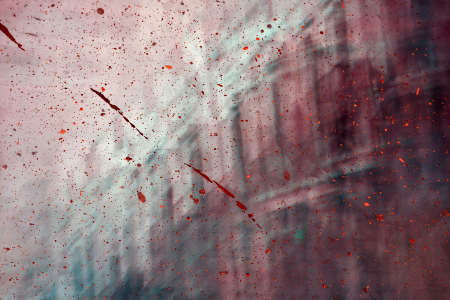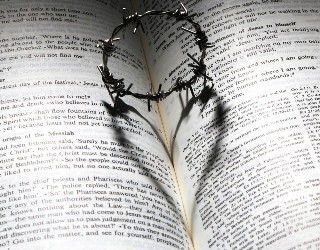Scriptorium
FREE Catholic Classes
A scriptorium is commonly a large room set apart in a monastery for the use of the scribes or copyists of the community. When no special room was devoted to this purpose, separate little cells or studies called "carrels" were usually made in the cloister, each scribe having a window and desk to himself. Of this arrangement the cloister of St. Peter's, Gloucester, now Gloucester Cathedral, supplies the most perfect example (see CLOISTER). The scriptorium was under the care of the precentor or else of one of his assistants called the armarius , whose duty it was to provide all the requisites needed by the scribes, such as desks, ink, parchment, pens, pen-knives, pumice-stone for smoothing down the surface of the parchment, awls to make the guiding marks for ruling lines, reading-frames for the books to be copied, etc. Most of these were manufactured on the premises: thus at Westminster the ink was made by the precentor himself, and he had to do it in the tailor's shop. The rules of the scriptorium varied in different monasteries, but artificial light was forbidden for fear of injury to the manuscripts, and silence was always enforced. As a general rule those of the monks who possessed skill as writers made this their chief, if not their sole active work. An anonymous writer of the ninth or tenth century speaks of six hours a day as the usual task of a scribe, which would absorb almost all the time available for active work in the day of a medieval monk. Very often the scriptorium of a monastery developed some peculiarities of writing which were perpetuated for considerable periods, and are of great value in ascertaining the source from which a manuscript comes. Thus at St. Albans the scribes for a long time affected a peculiar thirteenth-century style of hand with the long strokes of certain letters bent back or broken, while certain special variations from the common form of spelling, such as imfra for infra , are also peculiar to their work.
We ask you, humbly: don't scroll away.
Hi readers, it seems you use Catholic Online a lot; that's great! It's a little awkward to ask, but we need your help. If you have already donated, we sincerely thank you. We're not salespeople, but we depend on donations averaging $14.76 and fewer than 1% of readers give. If you donate just $5.00, the price of your coffee, Catholic Online School could keep thriving. Thank you.Help Now >
Various names were in use to distinguish the different classes of writers. In monasteries the term antiquarii was sometimes used for those monks who copied books, the common writers who despatched the ordinary business of the house being called librarii , or simply scriptores. If a scribe excelled in painting miniatures or initial letters he usually confined himself to such work, and was called illuminator , while one who worked chiefly on legal documents was a notarius. The price of books varied a good deal at different dates, but was always what we should now call low, considering the time and labour involved. Thus in 1380 John Prust, a Canon of Windsor, received seventy-five shillings and eight pence for an Evangelium , or book of the liturgical Gospels ; and in 1467 the Paston "letters" show that a writer and illuminator of Bury St. Edmunds received one hundred shillings and two pence for a Psalter with musical notes, illuminations, and binding. In 1469 William Ebesham wrote out certain legal documents at two-pence a leaf, and a book at "a peny a leaf, which is right wele worth". It is to be observed that on the invention of printing with movable types, although the new art met with strong opposition from the professional scribes, the monks commonly welcomed it, as it shown by the establishment of Caxton's press within the precincts of Westminster, and of very early presses at Subiaco and other monasteries.
 Hi readers, it seems you use Catholic Online a lot; that's great! It's a little awkward to ask, but we need your help. If you have already donated, we sincerely thank you. We're not salespeople, but we depend on donations averaging $14.76 and fewer than 1% of readers give. If you donate just $5.00, the price of your coffee, Catholic Online School could keep thriving. Thank you. Help Now >
Hi readers, it seems you use Catholic Online a lot; that's great! It's a little awkward to ask, but we need your help. If you have already donated, we sincerely thank you. We're not salespeople, but we depend on donations averaging $14.76 and fewer than 1% of readers give. If you donate just $5.00, the price of your coffee, Catholic Online School could keep thriving. Thank you. Help Now >







 Daily Readings for Saturday, April 20, 2024
Daily Readings for Saturday, April 20, 2024 St. Marian: Saint of the Day for Saturday, April 20, 2024
St. Marian: Saint of the Day for Saturday, April 20, 2024 Children's Prayer For Parents: Prayer of the Day for Saturday, April 20, 2024
Children's Prayer For Parents: Prayer of the Day for Saturday, April 20, 2024
